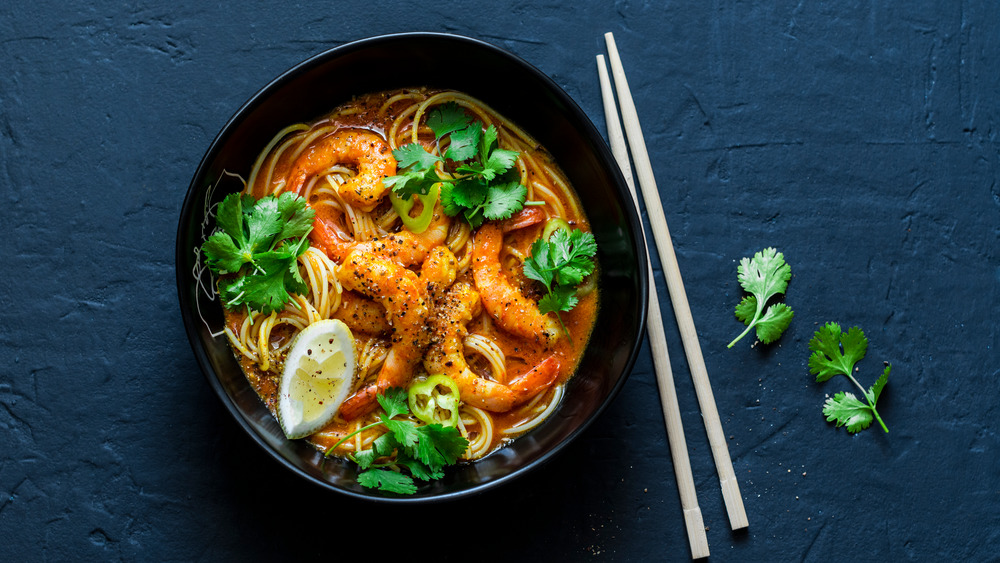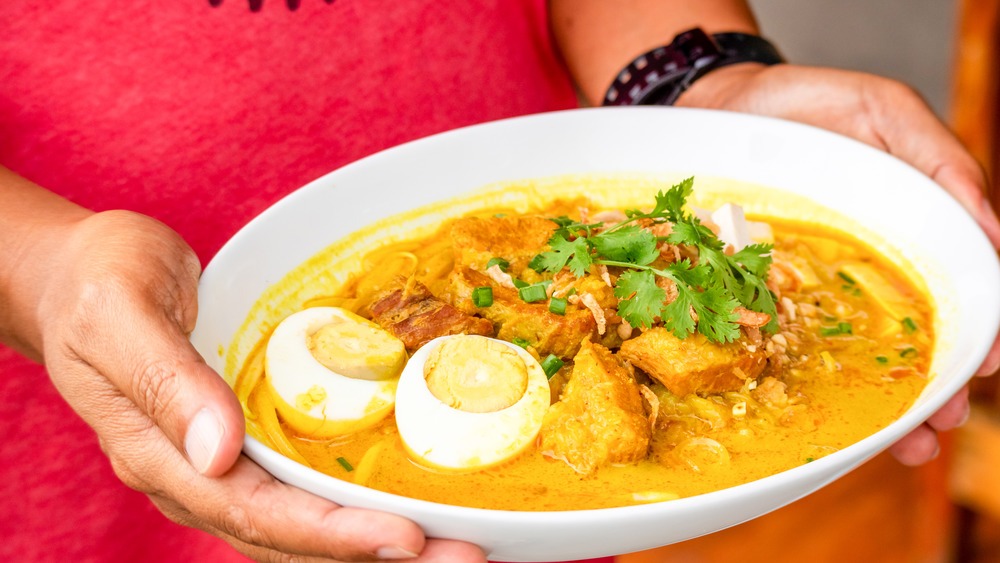The Untold Truth Of Laksa
As the weather cools, soup reigns supreme throughout autumn and winter. While some of the customary soups — chicken noodle, baked potato, ramen — are surely being enjoyed in a myriad of home kitchens as we speak, there is one soup that might be even more delicious and fulfilling than those: laksa.
National Geographic calls it "the tropical Malay Peninsula in a bowl of soup noodles, as much a fusion of cultures as it of ingredients." Medium notes that the soup's origins are from Southeast Asia, specifically Peranakan culture, which is a "mash-up of Chinese, Malay, and Indonesian influences." And according to Atlas Obscura, laksa was even ranked in the top 10 of CNN's 2011 list of the World's 50 Best Foods.
Atlas Obsura states that the tradition of laksa was created thanks to Peranakans meshing Chinese food with Southeast Asian ingredients like chilies and coconut milk. Furthermore, laksa also means "one hundred thousand" in Sanskrit, which is said to refer to the large variety of ingredients used in making the dish. It is endlessly customizable, which is another potential reason for its growing ubiquity.
What exactly is laksa?
There are also two more common types of laksa, according to The Spruce Eats: curry laksa and asam laksa. Curry laksa is a rich, creamy soup made of coconut milk, curry paste, and rice noodles. Components like fish balls and tofu puffs are often added to beef it up, according to Medium. Asam laska, on the other hand, is lighter, fish-focused, and redolent of tamarind, cucumber, mint, and other bright flavors, with a subtle sour note.
National Geographic states that there are some ingredients that are essential regardless of the type of laksa: rampah (curry paste made with galangal, turmeric, dried shrimp, lemongrass, and chiles), daun kesum (reminiscent of mint or cilantro), balcam (pressed fermented shrimp paste), fish stock, and noodles. Additionally, Taste Atlas notes that commonly used spices in both variations are ginger, galangal, turmeric, cloves, and various chiles and chili pastes.
So if you have a hankering for soup this winter, think about making some laksa for a warming cold weather meal.

